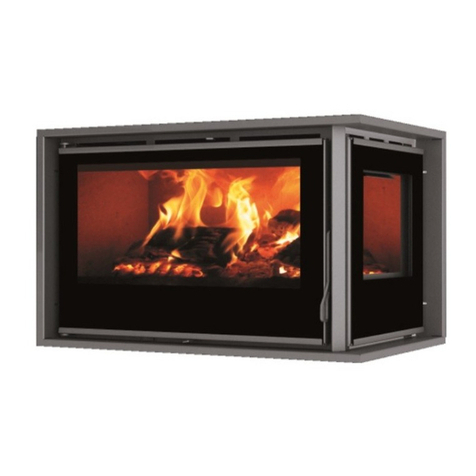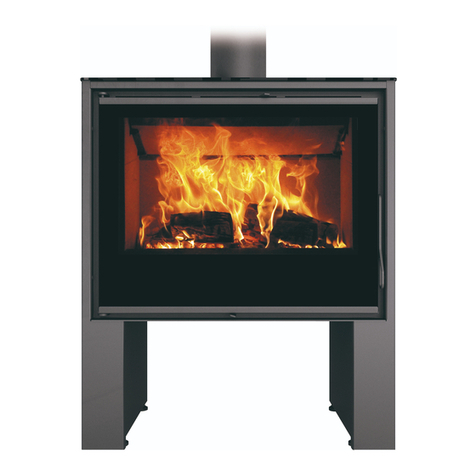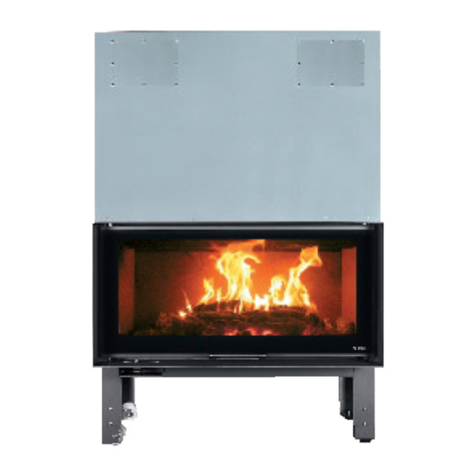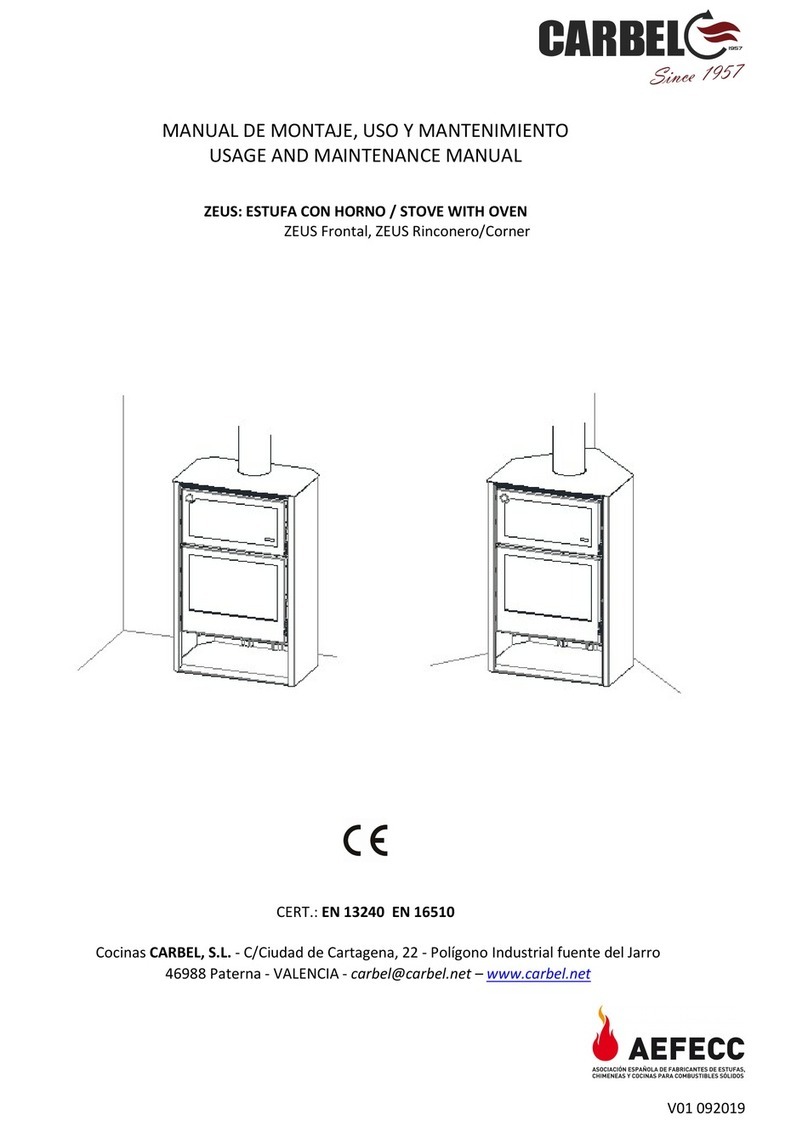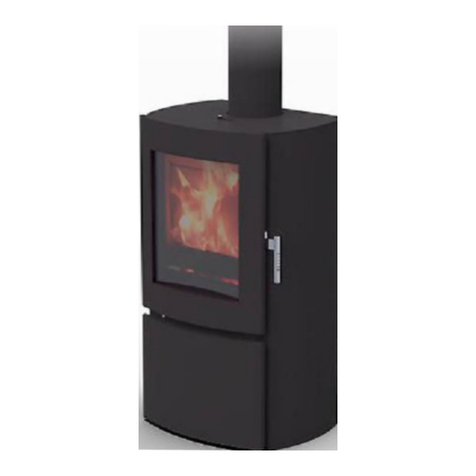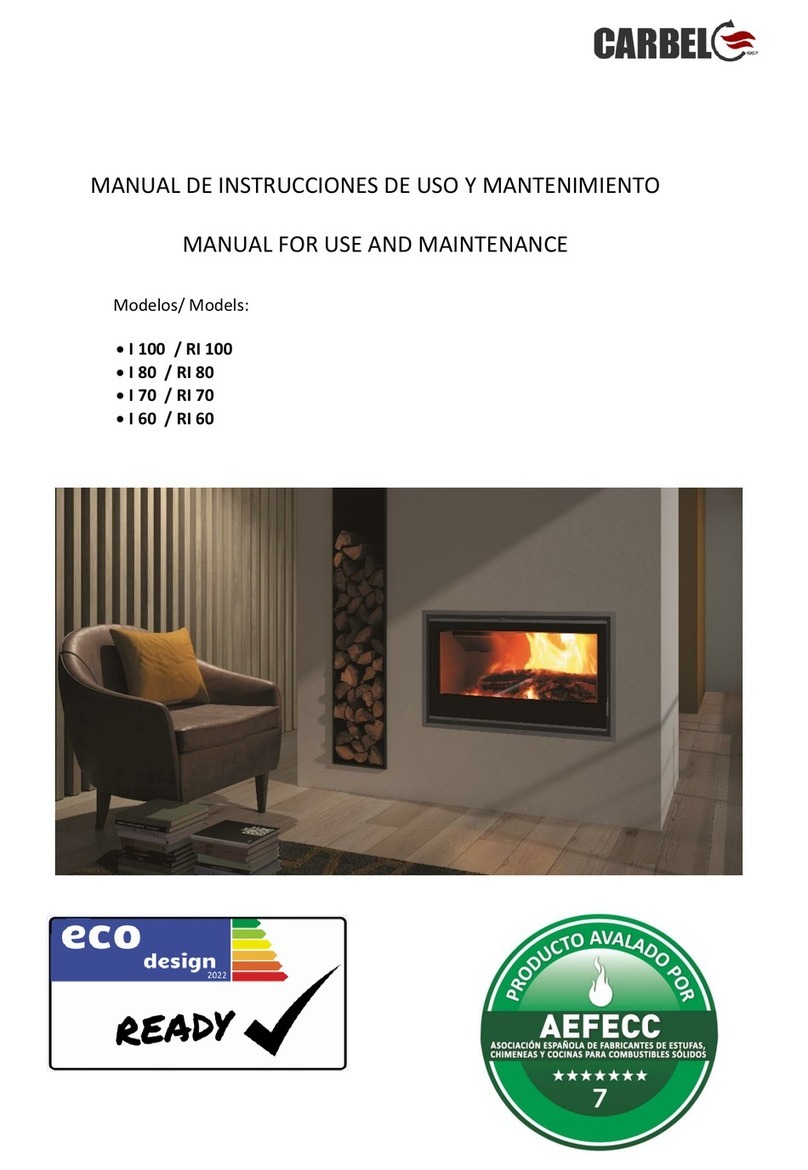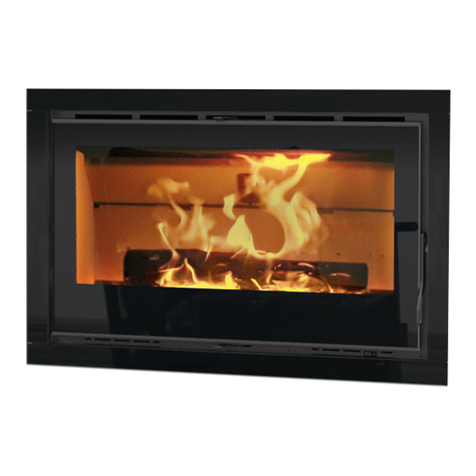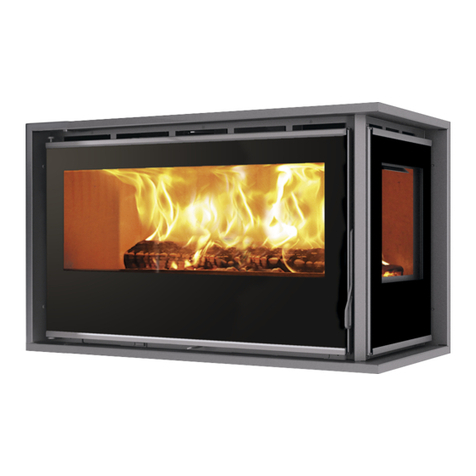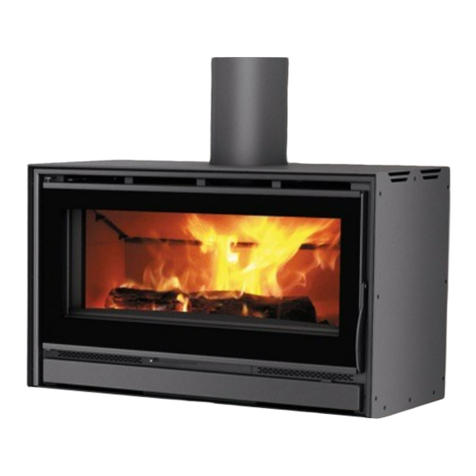7
Un ciclo de combustión completo comprende:
1º Un breve espacio de tiempo después de la recarga en el que la leña empieza a calentarse y no produce
llama. El tiempo que transcurre hasta que prende la llama es un indicador de la temperatura del hogar, si Vd.
espera demasiado tiempo a realizar la recarga, la temperatura desciende demasiado y la nueva carga de leña
no se enciende bien, esto perjudica la combustión y provoca que el cristal se ensucie.
2º La leña aumenta rápidamente de temperatura y empieza a descomponerse emitiendo gas que se inflama si
la temperatura del hogar es la adecuada. La temperatura del hogar empieza a recuperarse a medida que el
combustible va desprendiendo más gas y aumenta el volumen de las llamas.
3º Después de un intervalo de tiempo, que varía dependiendo del tipo y formato de la leña, se ha alcanzado el
máximo valor de temperatura, la emisión de gas de la leña empieza a descender lentamente junto con el
volumen de las llamas.
Cuando se agota la emisión de gas de la carga de leña, se extingue la llama, quedando brasas incandescentes.
Es entonces cuando se debe realizar la nueva recarga de leña.
- La carga de combustible debe ser aproximadamente el peso aconsejado por el fabricante para cada modelo,
preferentemente en una o dos piezas.
- Evite el exceso de carga con leña fina, esto puede ocasionar una combustión deficiente, la leña emite muy
rápidamente un excesivo volumen de gas y no hay suficiente aportación de aire. Aunque hay un gran volumen
de llamas la combustión no es buena y el cristal tiende a ensuciarse. Se pueden alcanzar temperaturas
excesivas que ponen en peligro la integridad de la estufa y la seguridad de los usuarios.
- Seleccione la leña para conseguir el tipo de funcionamiento deseado. La leña más fina de menor calibre debe
utilizarla para conseguir una mayor potencia térmica, utilícela después del encendido para conseguir una
respuesta más rápida y cuando tenga mayor necesidad de calor.
Utilice la leña más gruesa, para conseguir una combustión más lenta, cuando tenga menos necesidad de calor
o para mantenimiento, siempre precedido por un ciclo de mayor potencia con leña más fina, cuando el
aparato ya tiene una temperatura alta. Si es necesario acompañe la leña más gruesa con alguna pieza fina.
- Durante el funcionamiento la puerta debe estar siempre cerrada, cuando abra la puerta para realizar la
recarga debe hacerlo lentamente para evitar absorber el humo del interior del hogar.
3.2 Combustible
El rendimiento de la estufa depende en gran medida del combustible utilizado. La leña debe estar bien seca
(menos del 20% de humedad), le proporcionará más calor, le será más fácil regular el fuego y mantendrá en
mejor estado la estufa y el conducto de humos.
Almacene la leña en un lugar seco, ventilado y protegido de la lluvia, al menos durante 1-2 años según las
condiciones de almacenamiento y el clima de la zona.
Utilice piezas de leña abierta, arde mejor que los troncos de leña. Es mejor que las piezas de leña estén
abiertas y tengan una sección, tamaño, y forma, lo más parecido y uniforme posible entre sí.
